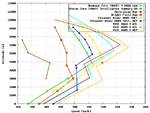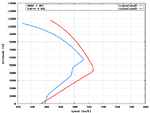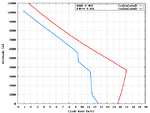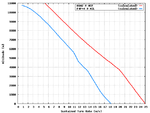John Davies
Airman
- 33
- Jun 17, 2008
While we're on the subject of the Wildcat, here's a bit of light relief……
All taildraggers swing a bit on takeoff, but the Wildcat more than most. This was due to a combination of a big torquey radial, a narrow undercarriage, a short fuselage and a fin ("vertical stabiliser" in American) and rudder that could have been bigger, and indeed were enlarged in the later ones.
So before you open the throttle you wound in a lot of rudder trim to compensate. Now the fun starts….
The rudder trimmer in the early Wildcats (and for all I know in all of them) worked in the opposite to the natural sense; i.e you wound the wheel to the left to apply right trim and vice versa. There was also a trim indicator, which did go round the right way, which meant that when the trim wheel was being wound one way, the indicator was going the other way. Are you confused yet?
Of course, from time to time the inevitable happened, and some luckless sprog wound in a handful of trim not to compensate for but to accentuate the swing. Once the throttle was opened, no pilot in the world had a leg strong enough to force the rudder pedal over against the combined forces of swing and mis-trim, and he would very soon find himself facing the way he had just come.
Some very spectacular incidents resulted. Apparently some pilots actually managed to take off in this manner. I never heard of an accident in which anyone was killed. Grumman built their aircraft very strongly! However, it was a bit unfair on other users of the airfield. It never, to my knowledge, happened afloat, because no pilot is going to do that more than once, so it tended to happen during training ashore.
In a way, it's kind of comforting. It shows that British designers did not have a monopoly of mutton-headed anti-ergonomic cockpit design.
All taildraggers swing a bit on takeoff, but the Wildcat more than most. This was due to a combination of a big torquey radial, a narrow undercarriage, a short fuselage and a fin ("vertical stabiliser" in American) and rudder that could have been bigger, and indeed were enlarged in the later ones.
So before you open the throttle you wound in a lot of rudder trim to compensate. Now the fun starts….
The rudder trimmer in the early Wildcats (and for all I know in all of them) worked in the opposite to the natural sense; i.e you wound the wheel to the left to apply right trim and vice versa. There was also a trim indicator, which did go round the right way, which meant that when the trim wheel was being wound one way, the indicator was going the other way. Are you confused yet?
Of course, from time to time the inevitable happened, and some luckless sprog wound in a handful of trim not to compensate for but to accentuate the swing. Once the throttle was opened, no pilot in the world had a leg strong enough to force the rudder pedal over against the combined forces of swing and mis-trim, and he would very soon find himself facing the way he had just come.
Some very spectacular incidents resulted. Apparently some pilots actually managed to take off in this manner. I never heard of an accident in which anyone was killed. Grumman built their aircraft very strongly! However, it was a bit unfair on other users of the airfield. It never, to my knowledge, happened afloat, because no pilot is going to do that more than once, so it tended to happen during training ashore.
In a way, it's kind of comforting. It shows that British designers did not have a monopoly of mutton-headed anti-ergonomic cockpit design.





